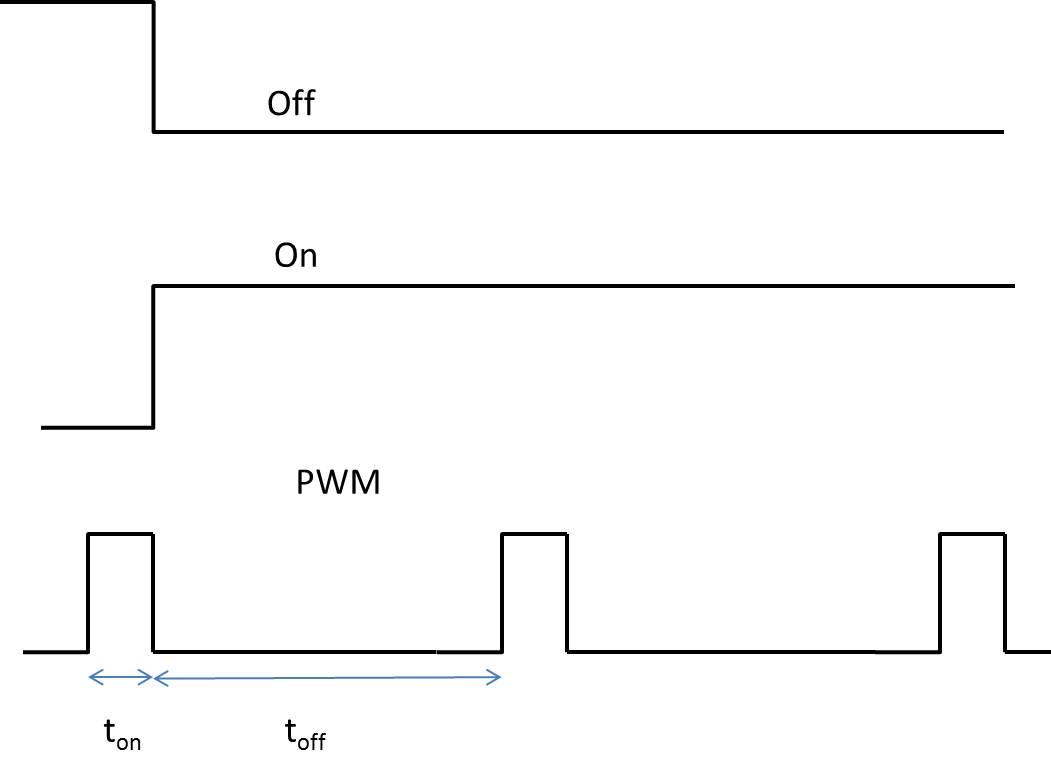The Load Bank
The load bank consists of 5 heating elements that are connected to the 220V AC generator, Engineering Without Borders (EWB) also plan on installing concrete tanks
around these heating elements in order to heat water for residents in the village with these heating elements. These heating elements have a rating of 220V and 2kW. As seen in Fig 5 in the
design and operation page, each heating element is switched on or off via the signal from the micro-controller.
Pulse-Width Modulation (PWM)
Out of the 5 heating elements, the first four elements will be switched between a fully-on state and fully-off state where as the last element will switch between the on/off state at a high frequency with different with a varied pulse width. This last heating element is therefore said to undergo pulse width modulation (PWM) which is essential to improve the accuracy of our power dissipation. This is because for digital signals the output can only be HIGH or LOW, meaning that for this case the heating elements can either dissipate 0kW or 2kW which is extremely inconvenient as it means that the power dissipation can only be multiples of 2kW, therefore if the power dissipation is required to be between this range then there is a problem.
PWM is a simple solution that was implemented by the micro-controller on one of the heating elements in order to address this issue. In PWM the output is quickly toggled between HIGH and LOW
and the duration of time the pulse is HIGH is varied. This means that the power dissipation of this particular heating element can be made to be anywhere between 0kW and 2kW by just varying how
long the micro-controller turns on the heating element.
Figure 9 shows the difference between the standard ON/OFF states and a PWM signal.
In order to carry out PWM, the time that the output signal from the micro-controller is high (ton) is varied between 0 and 'T' where 'T' is the period of the signal. By increasing
ton the average value of the signal increases and reducing ton also reduces the average value of the signal.
More specifically the mathematical formulae is: Signalaverage = (ton/T)*SignalPeak
This concept can be applied to the heating elements which allows us to dissipate the required amount of power on average over time. So if we want to dissipate 1.5kW from a certain heating element
we don't leave it on full-time but rather only leave it on 75% (1.5kW/2kW) of the time, so on average over time it will dissipate the required 1.5kW.

Figure 9: PWM in comparison to steady-state signals